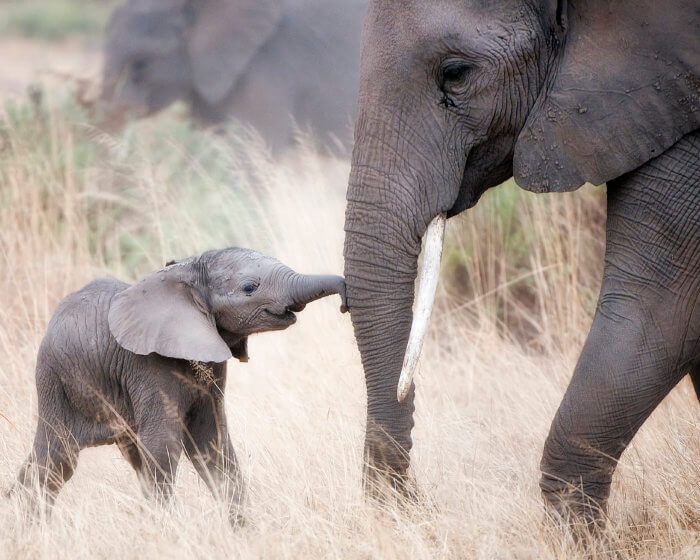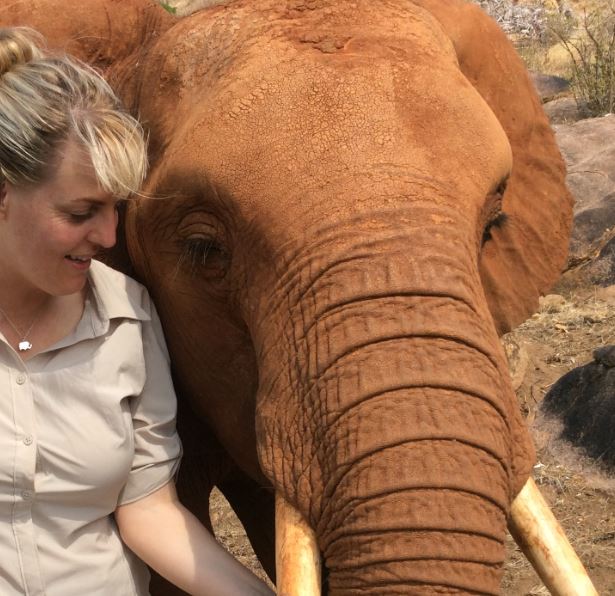Last year I was invited to the premiere of Unlocking the Cage in Portland, Oregon, where my organization, the KOTA Foundation for Elephants, is based. The film depicts the journey of lawyer Steven M. Wise, president of the Nonhuman Rights Project, to persuade courts to recognize chimpanzees’ legal personhood and fundamental rights using a legal cause of action that animal advocates had not previously used in animal cases: petitions for common laws writs of habeas corpus. I am not a lawyer but, as an animal advocate myself, I was fascinated that our legal system recognizes a corporation as a legal person with rights yet a chimpanzee, who has the ability to use sign language to communicate her feelings, is a legal “thing.”
During the film I wondered out loud to my friend, Lena, if the reason they had chosen to represent these three groups of animals (great apes, cetaceans and elephants) was that members of these species have spindle neurons, as scientists had recently discovered and as I’d written about only a week earlier.
Spindle neurons, also known as von Economo neurons (VENs), are found in what’s thought of as the “emotional superhighway” of the human brain. When a new mother is placed inside a CT scanner and a recording is played of her newborn baby crying it is this region of the brain that lights up like a Christmas tree in a dark room.

The spindle neuron theory has also been one of the lines that we humans have tried to draw between us and them. How could we prove that animals actually felt compassion, anger, fear, depression or happiness if they didn’t share the one thing that proved that we could? Once it was discovered that members of these species did indeed have spindle neurons in their brains, the line between us and them got that much blurrier. But the elephants gave us yet another surprise. Not only do they have roughly the same number of spindle neurons in their brain as we do, relative to brain size, but they also have them in the same region of the brain as we do.
This discovery suggested that it was finally a possibility, at the very least, that elephants were able to experience the same range of emotions that we do. And since we already know that emotion plays a vital role in our human decision-making abilities, it made us wonder to what extent it played a role in theirs. After all, anyone who has studied elephants has witnessed what appears to be an incredible amount of compassion shared between them. Death in an elephant family affects them profoundly. Not only does their demeanor suggest depression and sadness when standing over a fallen loved one, but researchers have also witnessed elephant families revisiting the site of the death for weeks, months and even years. This, in itself, is not something we have ever seen any other mammal do.
As soon as the film ended a question-and-answer forum took place.
“You need to ask them that question,” Lena said.
“There is no way I am asking that question,” I argued.
“Why not?”
“Because look around you, everyone looks like they have at least two PhDs apiece; I don’t want to look like an idiot. Besides, they probably already know all about the spindles.”
But Lena only rolled her eyes and stood up before I could stop her.
“We have a question over here,” she shouted as I sunk lower in my seat.
Suddenly a microphone was shoved in my face. I stood slowly with an overwhelming desire to shield my eyes from the glare of the lights and proceeded to obliterate the question. As I stuttered my way through, an uncomfortable hush fell across the theater. Unable to state the question as clearly as I could in my head, I felt a drop of sweat wind its way down my spine as it seemed that everyone slowly turned around in their seats to watch me squirm.
My inside voice screamed, “For Pete’s sake get it together!”
The panelists politely looked to one another in what appeared to be abject confusion before they asked me to speak to them afterwards, therefore saving me from further embarrassment. I sunk back into my seat, thankful I was in the back row and closest to an escape. Lena reassured me that the gist of my question had gotten through but I didn’t believe her.
Before I made my hasty retreat a gentlemen sitting in the seat directly in front of me turned around and asked me to write down the name of the spindle neuron and the blog I had written about it for him to investigate. Then another card was passed to me with a note asking the very same thing for someone else. Lena gloated next to me as she handed me yet another piece of paper passed along from someone sitting on the other side of her. As soon as the panel session was over and I tried to sneak away, I was approached by even more people. Apparently my question had gotten through. The spindle neuron seemed as fascinating to them as it was to me.

Soon I was tapped on the shoulder and told that Mr. Wise would like to speak with me. Lena was speaking to him as I approached and had just mentioned an elephant article that I had been interviewed for by an author who turned out to be a very good friend of his. We spoke about it briefly, took a selfie, he told me to call him Steven and then he informed me that he was looking for elephant experts for his next case.
Later that week he invited me to sit in on one of the law classes he was teaching at Lewis & Clark College. It was the hottest ticket in town; everyone wanted a seat in this class. Afterwards, he told me more about the specifics of the elephant case and I got to share with him the mission and work of the non-profit I had founded as a way to teach people in the United States about all things African Elephant. I told Steven that, having worked for two years on the largest elephant study ever done in North America with captive elephants, I finally had the opportunity to get back to Africa and follow some of the individual wild elephants I had monitored for several years as a conservation research scientist. Upon my return I began to realize just how little the average person in the US actually knows about how remarkable elephants are. That became the mission of The KOTA Foundation for Elephants.
We created a series of lesson plans in local schools using elephants as the vehicle to teach scientific concepts such as infrasonic communication, the sophisticated way in which elephants communicate with one another. Our preliminary results were so promising we had to create a waiting list since we had more schools than we could possibly handle. One speaking engagement quickly turned into more than 50 and soon I was buried underneath a manuscript having written my first book telling the stories of the individual elephants I have gotten to know in Africa.
https://youtu.be/OJmN5r52sZI
Steven explained in our meeting that he wanted footage of specific elephant behaviors that coincided with the behaviors listed in each affidavit because, after all, “seeing is believing.” Collecting elephant footage and documenting specific elephant behaviors was one of my stranger hobbies and I had done it for years. A few weeks later Steven asked me to join the Nonhuman Rights Project team as a consultant.
In addition to needing someone with a scientific background to be a liaison between the lawyers and some of the greatest elephant scientists in the world, the team also wanted to include videos to go along with each affidavit. Steven wanted the judges and members of the media and the public to have two ways to interpret the depth of an elephant’s behavior instead of only one. This is also an integral part of my work on the project.
The spindle neuron discovery has taught us that we are not the only species that has the capacity to reason and process emotions. Elephants have taught me that compassion is not a trait shared only between humans. It is precisely because of elephants’ autonomy and remarkably complex behavior—the very fact that they, alone and together, make choices and contemplate and assess situations—that I was thrilled to be able to join this case.
I’d like to hope that our society is evolved enough that this reality will soon be reflected in the law in the form of nonhuman rights. Surrounded by some of the smartest elephant experts on the planet and lawyers that are literally changing history, I am thrilled to be a small part of this unprecedented, historic endeavor … unlocking the cage for elephants and other nonhuman animals.